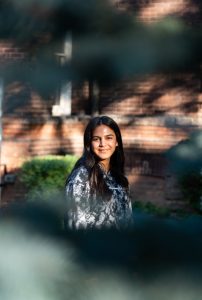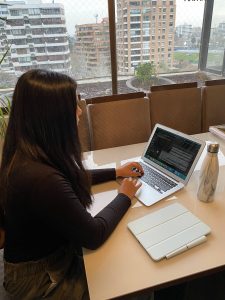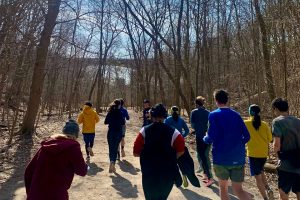Ishika is from New Delhi, India. She is in fourth year at U of T, in the Astronomy and Physics Specialist program.
Her hobbies include exploring new places, enjoying the outdoors with friends, and running with the U of T Run Club.
She completed the SURP (Summer Undergraduate Research Program) this passed summer.
What made you decide to participate in SURP?
I wanted to join SURP to gain valuable research experience that would allow me to consider what I want to pursue for graduate school. I was also keen to form new connections within the astronomy department and learn about the various research professors, postdocs and students work on.
SURP provides one of the best ways for undergraduates to do real astrophysics research.
Can you tell us about your research project?I worked on the population synthesis of repeating Fast Radio Bursts (FRBs) under the supervision of Dr. Ziggy Pleunis and Dr. Paul Scholz. FRBs are milliseconds-long, high-energy emissions in the radio frequency originating from unknown, extragalactic sources. Some of these sources have produced repeating bursts, raising the question of whether repeaters and apparent non-repeaters come from the same underlying population. We’re trying to answer this question using a method called population synthesis.
Population synthesis involves simulating a source population and telescope responses to get simulated results which are compared to observed results. These steps are iterated until the simulated and observed results are consistent. Ultimately, we will compare populations of different properties (like dispersion measure and burst widths) to constrain the intrinsic source population of FRBs using data from the CHIME/FRB telescope.
Can you explain how SURP was different from your undergrad work?I appreciated the flexibility SURP offered – I was able to work at my own pace without worrying about meeting harsh deadlines like I have to for most of my undergrad courses. Another major difference is how accessible my supervisors were – they took their time to explain anything I didn’t understand. It can be harder to get this kind of interaction with professors, especially for larger courses.
Do you think that SURP has better prepared you for your fourth year?
Yes, for sure! This year, I’m building on my SURP project through the AST425 research course and looking forward to joining a broader research group. In past semesters, I’ve focused more on coursework and wasn’t as involved with research during the academic year. This semester is far more research heavy. Having done SURP, I feel much more comfortable with research.
What are your plans for the future?This fall I’m going to be applying to graduate schools for astrophysics across Canada. In the long term, I want to continue doing astronomy research either at a university or a space agency and also engage in science outreach.
A simulated burst timeline for 10 FRB sources for an observation time of 10 hours. The arrival times plotted in black are not filtered for signal-to-noise (SNR) whereas the ones plotted in red are arrival times of bursts which passed our SNR threshold. From this plot, we can deduce the observed repeat rate of sources. Credit: Ishika Banghari.
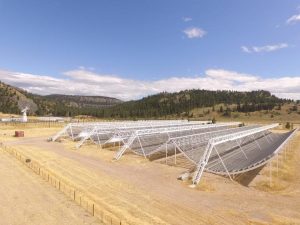
The Canadian Hydrogen Intensity Mapping Experiment (CHIME) telescope is a main detector of FRBs. Credit: CHIME/FRB Collaboration.
To learn more about SURP, visit: http://www.dunlap.utoronto.ca/training/surp/. More SURP Student Spotlight profiles for 2022 can be found at:
dunlap.utoronto.ca/2022-surp-student-spotlight-archives.

